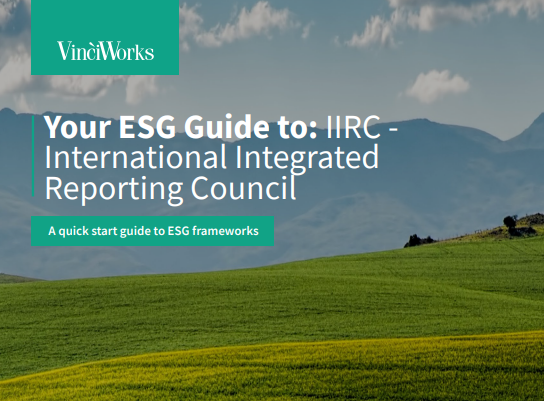
ESG reporting framework
ESG (Environmental, Social, and Governance) can feel like an overwhelming and confusing topic, from understanding which data should be tracked to figuring out which framework to use. Are ESG frameworks mandatory, or even necessary, for ESG? Which framework is right for your industry and type of organisation? What’s the benefit of aligning to a framework? ESG reporting and ratings drive a huge and growing amount of investment, and ESG is fast becoming the standard for businesses to manage and report on their risks.
Deciding to start ESG scoring can seem like a daunting task. But in actual fact, compliance dovetails into ESG reporting in a very meaningful way. Using a particular ESG framework can help to guide your reporting processes, showing you where to look, what to measure, and how to communicate it.
There are many reporting frameworks for ESG, and it can feel like an overwhelming task to figure out which one could be right for you. VinciWorks has created a series of guides to the various frameworks available in order to help you understand the different frameworks: what they mean, how to align with them, and which one might be right for your business if any.
Some of the most popular ESG frameworks are the World Economic Forum (WEF), the Global Reporting Initiative, the Sustainability Accounting Standards Board (SASB), the International Integrated Reporting Council (IIRC), the Carbon Disclosure Project (CDP) and the Task Force on Climate-Related Disclosures (TCFD).
IIRC ESG framework
The IIRC framework, also known as the international framework, is a coalition of non-profits, NGOs, accounting experts, regulators and investors who study the international marketplace and publish new corporate reporting standards to support businesses in reporting. It is mainly financial-focused but also looks more broadly at material data involving a company’s governance performance, strategy, and social and environmental impact.
The IIRC framework is a good starting point for any business, including those who want to show ESG performance to financial stakeholders, and companies that have demonstrable value creation. However, it’s overly focused on financial reporting, doesn’t include much about larger social or environmental impacts or performance, and is not aimed at a multi-stakeholder audience.
IIRC ESG reporting framework advantages
These are the main strong points of the IIRC reporting framework:
- Provides quality financial data
- Strong focus on business model and governance
- Can show resource allocation, particularly if making capital ESG investments
- Works well together with the SASB reporting framework
IIRC implementation guidance
The act of preparing an IIRC report generates internal benefits on its own, such as improved risk management and decision making. IIRC reports are aimed at showing how organisations create, preserve, and improve value.
To get started with an IIRC, here are the steps your organisation should take:
- Get organised: establish an implementation team and a repository of relevant resources
- Establish a plan and review existing reports for possible gaps
- Assess systems and controls
- Prepare report content
- Improve the process with a feedback system and continue to monitor progress
Want to find out if the IIRC might be the right framework for your business? Click the button below to download our quick start ESG guide to IIRC, free of charge.
Your ESG Guide to IIRC – International Integrated Reporting Council








